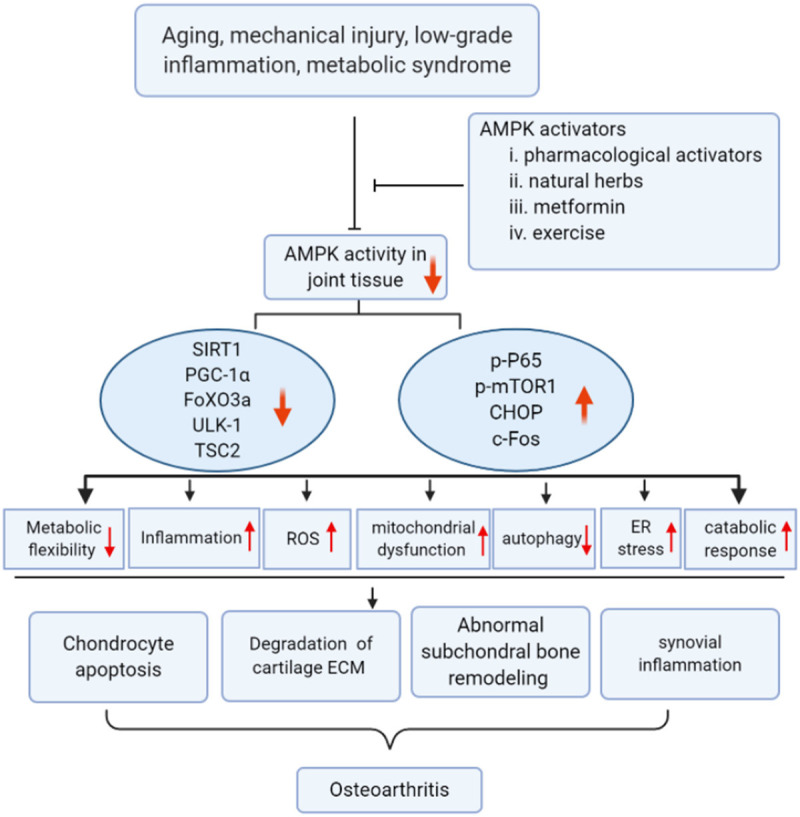Figure 2.

Dysfunction of AMPK activity disrupts cartilage, synovium and subchondral bone homeostasis, thus contributing to OA development. Aging, low-grade inflammation, mechanical injury, and metabolic syndromes result in compromised AMPK activity. Impaired AMPK activity decreases the level and activity of SIRT1, PGC-1α, FoXO3a, TSC2, and ULK-1 which causes mitochondrial dysfunction, aggravates oxidative stress, attenuates autophagy, and increases inflammation-mediated cartilage catabolism. On the contrary, expression of p-P65, p-mTOR1, CHOP, and c-Fos are up-regulated which promotes several signaling pathways, including NF-κB, ER stress, and osteoclastogenesis, resulting in chondrocyte apoptosis, synovial inflammation, and abnormal subchondral bone remodeling. Targeting impaired AMPK activity (e.g. AMPK pharmacological activators, natural herbs, metformin, and appropriate exercise) would be a potential approach to prevent OA.
